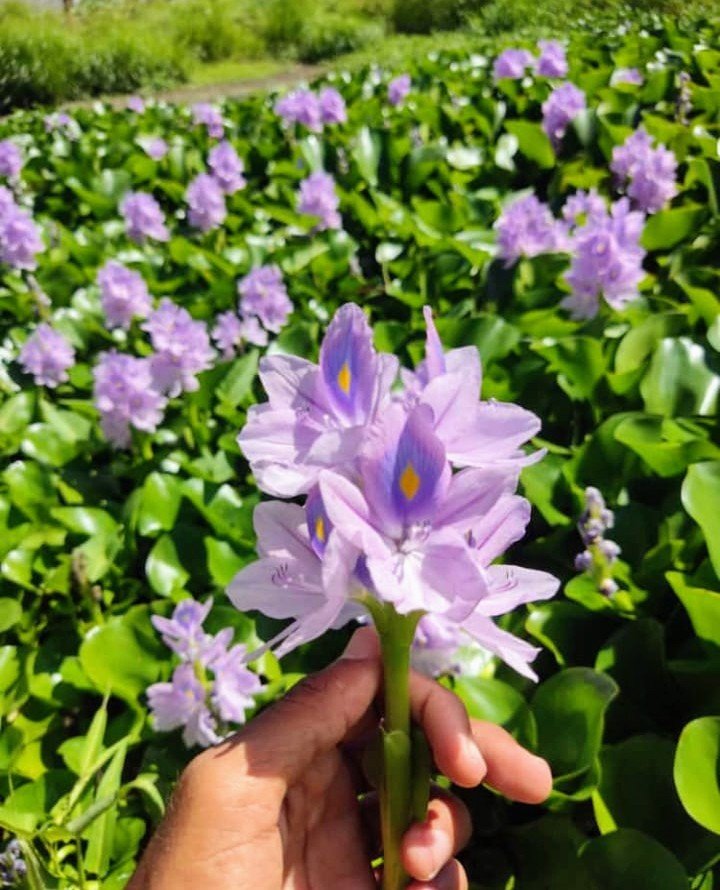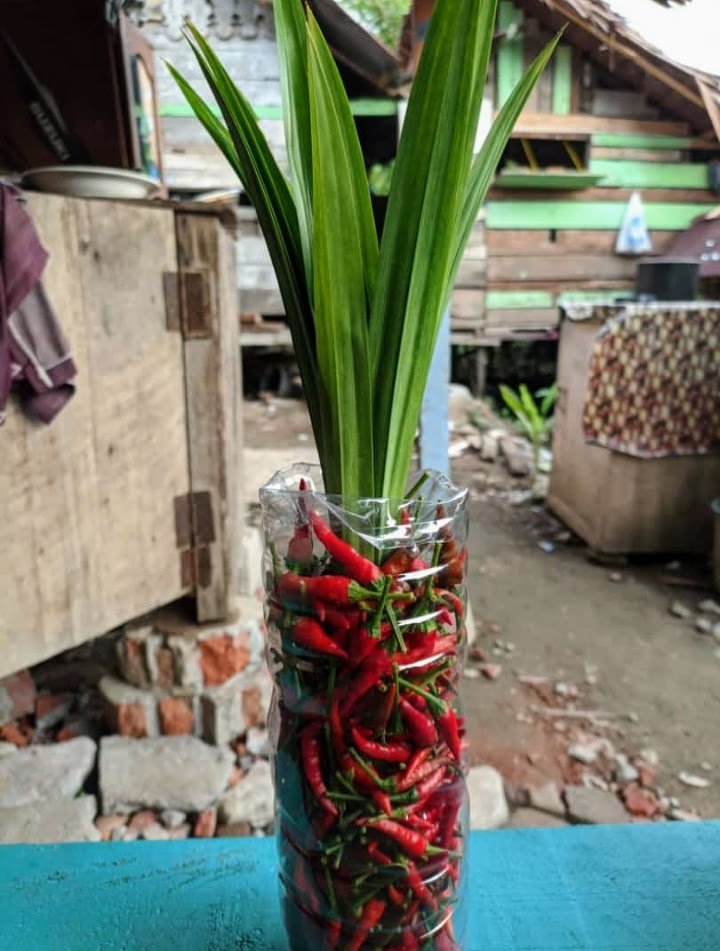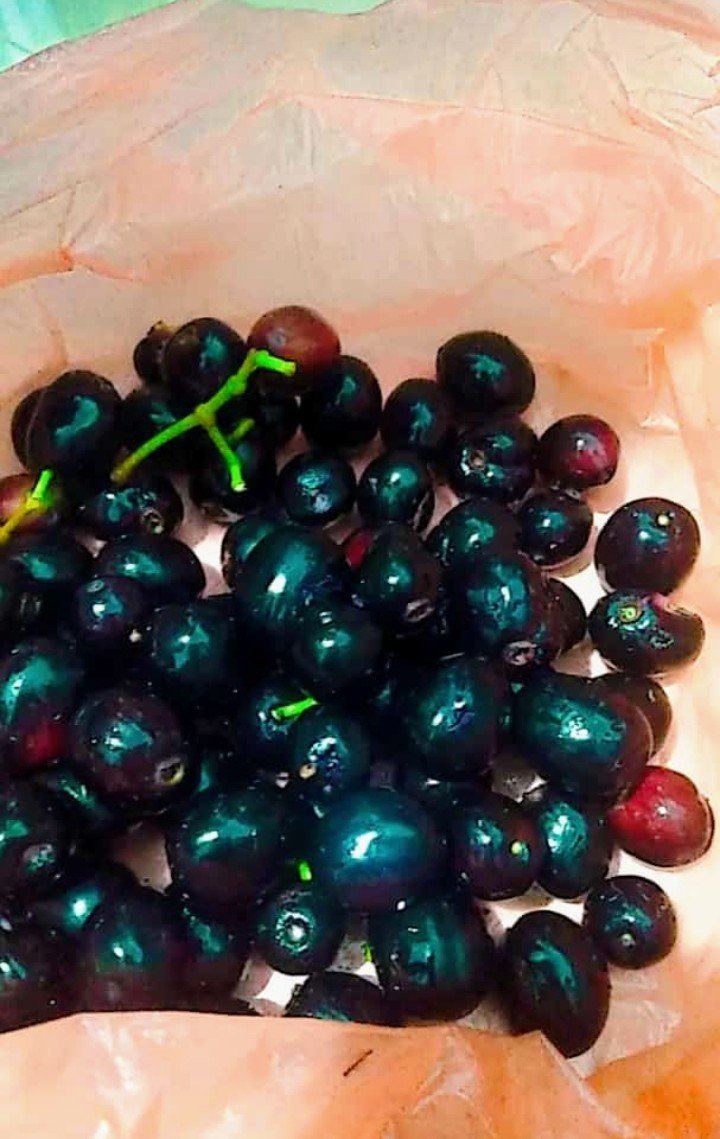Hello loyal friends of the CCH community. How are you? May good things always be with you. On this occasion, I would like to share some photography of plants and their fruits. I took these photos when I was in nature while spending my free time and enjoying nature. I tried to capture some of these photos with my smartphone camera.

This first picture is the flower of a plant called water hyacinth, with the Latin name Pontederia crassipes or Eichornia crassipes. The beautiful flower made me interested in capturing it. A little knowledge about it is : Water Hyacinth is a type of floating aquatic plant. Water hyacinth was first discovered accidentally by a scientist named Carl Friedrich Philipp von Martius, a German botanist in 1824 while on an expedition in the Brazilian Amazon River. Water hyacinth has a high growth speed so this plant is considered a weed that can damage the aquatic environment. Water hyacinth easily spreads through waterways to other water bodies.
The habitat of the plant is : Water hyacinth grows in shallow ponds, wetlands and swamps, slow flowing water, lakes, reservoirs and rivers. It can adapt to extreme changes in water levels, water currents, and changes in nutrient availability, pH, temperature, and toxins in water. The rapid growth of water hyacinth is mainly due to water that is high in nutrients, especially those rich in nitrogen, phosphate and potassium. Salt content can inhibit water hyacinth growth as is the case with lakes in the coastal areas of West Africa, where water hyacinth will increase during the rainy season and decrease as the salt content rises in the dry season.

This next picture is a combination of red chili peppers and pandan leaves in a container. Chili peppers are fruits and plants of the genus Capsicum. The fruit can be classified as a vegetable or a condiment, depending on how it is used. As a condiment, the spicy chili fruit is popular in Southeast Asia as a flavor enhancer for food. For Padang cuisine in Indonesia, chili is even considered as the tenth "staple food" (instead of the ninth). It is very difficult for Padang cuisine to be made without chili.
Large red chili (Capsicum annuum L.) is one type of vegetable that has a high economic value. Chili contains a variety of compounds that are useful for human health. Chili (Capsicum annum L.) is one of the vegetable commodities that are widely cultivated by farmers in Indonesia because it has a high selling price and has several health benefits, one of which is the capsaicin substance which functions in controlling cancer. In addition, there is a high enough vitamin C content in chili peppers to meet everyone's daily needs, but it must be consumed in moderation to avoid gastric pain.
Pandan wangi (or commonly called pandan alone) or with the scientific name Pandanus amaryllifolius is a type of monocotyledonous plant from the Pandanaceae family that has distinctive fragrant leaves. The leaves are an important component in the cooking traditions of Indonesia and other Southeast Asian countries.
This plant is easily found in yards or grows wild on the shady edges of ditches. The roots are large and have taproots that support the plant when it is big enough. The leaves are elongated like palm leaves and arranged in a tight rosette, which can reach 60 cm in length. Some varieties have serrated leaf edges.

The latter is the fruit of the Jamblang tree. Jamblang (Syzygium cumini) is a type of fruit tree from the guava tribe (Myrtaceae). Jamblang fruit is commonly eaten fresh. In India and the Philippines, as is also the custom in some parts of Indonesia, ripe jamblang fruit is mixed with a little salt and sometimes sugar, then shaken in a closed container (usually two bowls cupped) so that it becomes soft and less astringent. This fruit can reduce stains on the teeth. The fruit, which is rich in vitamins A and C, can also be made into juice, jelly or wine. In the Philippines, jamblang wine is commercially cultivated.
Jamblang is cool, aromatic and a strong astringent. Seeds can also be used to treat strikhnina (strychnine), which is a specific antidote, and treat spleen treatment. Research in India shows that jamblang fruit has potential as a contraceptive for men.
Jamblang contains volatile oil, jambosin, organic acids, triterpenoids, and resins containing elagic acid, and tannins. Ayurvedic practitioners point out that the flesh of the fruit lowers blood for 30 minutes, the seeds lower blood sugar within 24 hours, and the maximum result of achieving hypoglycemic effects within 10 days.
I hope it's useful and you like it. Thank you for everything. May we always be together here, helping each other to achieve success. Good luck to all of you.